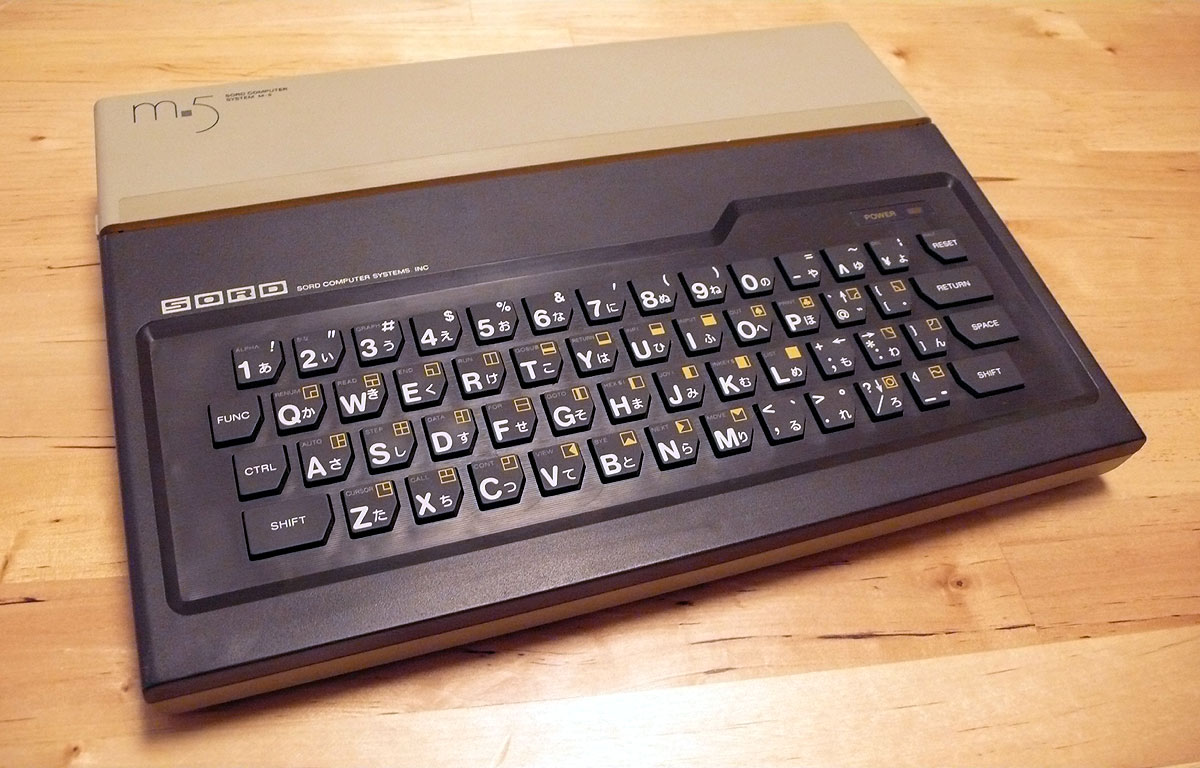|
Sage X3
Sage X3 is an enterprise resource planning product developed by Sage Group aimed at established businesses. The product was formerly known as Sage ERP X3 and is available in many of the territories that Sage operate. The product line which evolved into Sage X3, Adonix X3, was purchased by Sage in 2005. It was renamed Sage ERP X3 and later simply Sage X3. It briefly gained a longer name between 2017 and 2019, Sage Business Cloud Enterprise Management, as part of Sage's Sage Business Cloud offering, before returning to its previous Sage X3 name. Nucleus Research named the product a leader in ERP. Sage Business Cloud Accounting and Payroll, formerly Sage One, is also a part of the wider Sage Business Cloud brand but aimed at smaller enterprises. Adonix history In 1979 a French company called Société Parisienne de Micro-Informatique (SPEMI) was founded and they produced accounting software for Sord computers. The software was redeveloped for use on UNIX systems and a custom ... [...More Info...] [...Related Items...] OR: [Wikipedia] [Google] [Baidu] |
Sage Group
The Sage Group plc, commonly known as Sage, is a British multinational enterprise software company based in North Tyneside, England. As of 2017, it is the UK's second largest technology company, the world's third-largest supplier of enterprise resource planning software (behind Oracle and SAP), the largest supplier to small businesses, and has 6.1 million customers worldwide. It has offices in 23 countries. The company is the patron of the Sage Gateshead music venue in Gateshead. Sage is listed on the London Stock Exchange and is a constituent of the FTSE 100 Index. History 1981 to 2000 The Company was founded by David Goldman, Paul Muller, and Graham Wylie in 1981 in Newcastle, to develop estimating and accounting software for small businesses. A student at Newcastle University, Graham Wylie, took a summer job with an accountancy firm funded by a government small business grant to write software to help their record keeping. This became the basis for Sage Line 50. Nex ... [...More Info...] [...Related Items...] OR: [Wikipedia] [Google] [Baidu] |
Proprietary Software
Proprietary software is software that is deemed within the free and open-source software to be non-free because its creator, publisher, or other rightsholder or rightsholder partner exercises a legal monopoly afforded by modern copyright and intellectual property law to exclude the recipient from freely sharing the software or modifying it, and—in some cases, as is the case with some patent-encumbered and EULA-bound software—from making use of the software on their own, thereby restricting his or her freedoms. It is often contrasted with open-source or free software. For this reason, it is also known as non-free software or closed-source software. Types Origin Until the late 1960s computers—large and expensive mainframe computers, machines in specially air-conditioned computer rooms—were usually leased to customers rather than sold. Service and all software available were usually supplied by manufacturers without separate charge until 1969. Computer vendors ... [...More Info...] [...Related Items...] OR: [Wikipedia] [Google] [Baidu] |
Enterprise Resource Planning
Enterprise resource planning (ERP) is the integrated management of main business processes, often in real time and mediated by software and technology. ERP is usually referred to as a category of Business management tools, business management software—typically a suite of integrated application software, applications—that an organization can use to collect, store, manage and interpret data from many business sector, business activities. ERP systems can be local based or Cloud computing, cloud-based. Cloud-based applications have grown in recent years due to information being readily available from any location with Internet access. Traditional On-premises software, on-premise ERP systems are now considered Legacy system, legacy technology. ERP provides an integrated and continuously updated view of core business processes using common databases maintained by a database management system. ERP systems track business resources—cash, raw materials, production capacity—and t ... [...More Info...] [...Related Items...] OR: [Wikipedia] [Google] [Baidu] |
Sage Business Cloud
Sage Accounting and Sage Payroll are a suite of cloud-based accountancy and payroll products developed by Sage Group aimed at small and medium-sized enterprises as well as the self-employed. They exist under the suite banner of Sage Business Cloud, and the products were initially known as Sage One and are available in many of the territories that Sage operate. Originally launched in the UK and Ireland in 2011 Sage Business Cloud is a set of small business management tool that offers accounting, payroll, payments and time-tracking tools. It includes mobile apps that accept business payments, manage and pay bills, and payroll functions. The product launched in the United States in 2012, Canada, France, Germany and Spain in 2013 and has since launched in other territories that Sage operates in. Sage Business Cloud is developed using Ruby on Rails and C#/.NET Core by global teams within Sage including at those at their headquarters in Newcastle upon Tyne, England. The Sage Bus ... [...More Info...] [...Related Items...] OR: [Wikipedia] [Google] [Baidu] |
Globe Newswire
GlobeNewswire provides press release distribution services globally, with substantial operations in North America and Europe. GlobeNewswire was a Nasdaq, Inc. subsidiary from September 2006 until April 2018 when West Corporation (now Intrado) acquired the Public Relations Solutions and Digital Media Services Businesses, including GlobeNewswire, from Nasdaq. Formerly known as PrimeNewswire, the company changed its name to GlobeNewswire in 2008 to better reflect its international scope. Operations They deliver corporate press releases, financial disclosures and multimedia content to the media, investment community, individual investors and the public. In June 2018, GlobeNewswire introduced Media Snippets, providing the ability for organizations publishing press releases to embed a carousel of images, audio, video and live streaming into their press releases and web pages to tell a more complete brand story and increase engagement with media, investors and customers. In 2012, ... [...More Info...] [...Related Items...] OR: [Wikipedia] [Google] [Baidu] |
Sord Computer Corporation
} Sord Computer Corporation is a Japanese electronics company, founded in 1970 by the entrepreneur Takayoshi Shiina. From 1985 until 2018, it was a subsidiary of Toshiba and became known variously as Toshiba Personal Computer System Corporation and Toshiba Platform Solution Corporation. In 2018, Toshiba sold off the business and its name reverted to Sord Computer Corporation. It now focuses on embedded systems among other interests. History Early years SORD was founded by Takayoshi Shiina in 1970 when he was 26 years old. Initially, the company wrote software for DEC PDP minicomputers, before it branched out into hardware production. The name SORD is a contraction of SOftware/haRDware, reflecting the dual focus of the company. Sord presented the SMP80/08 in 1973, one of the first microcomputers, using the Intel 8008 microprocessor. However, it did not have a commercial release. After the first general-purpose microprocessor, the Intel 8080, was announced in April 1974, Sord ... [...More Info...] [...Related Items...] OR: [Wikipedia] [Google] [Baidu] |
UNIX
Unix (; trademarked as UNIX) is a family of multitasking, multiuser computer operating systems that derive from the original AT&T Unix, whose development started in 1969 at the Bell Labs research center by Ken Thompson, Dennis Ritchie, and others. Initially intended for use inside the Bell System, AT&T licensed Unix to outside parties in the late 1970s, leading to a variety of both academic and commercial Unix variants from vendors including University of California, Berkeley (Berkeley Software Distribution, BSD), Microsoft (Xenix), Sun Microsystems (SunOS/Solaris (operating system), Solaris), Hewlett-Packard, HP/Hewlett Packard Enterprise, HPE (HP-UX), and IBM (IBM AIX, AIX). In the early 1990s, AT&T sold its rights in Unix to Novell, which then sold the UNIX trademark to The Open Group, an industry consortium founded in 1996. The Open Group allows the use of the mark for certified operating systems that comply with the Single UNIX Specification (SUS). Unix systems are chara ... [...More Info...] [...Related Items...] OR: [Wikipedia] [Google] [Baidu] |
MAI Systems
MAI Systems Corporation, or simply MAI, was a United States-based computer company best known for its Basic/Four product and the customized computer systems that ran it. It was later known for its computer reservation systems. The company formed in 1957 as a consulting firm, Management Assistance Inc.. In the early 1960s they created a profitable niche leasing IBM mainframes and grew to have income in the millions. When the System/360 was announced the company was left with hundreds of millions of dollars worth of suddenly outdated equipment, and by 1971 the company was almost insolvent. The company re-launched that year starting several new subsidiaries. Among these was Basic/Four Corporation which sold customized minicomputers running their version of Business Basic, Genesis One that bought and sold obsolete equipment, and Sorbus, which performed servicing on computer equipment. Genesis One was never very successful, and while Sorbus was modestly profitable, by 1975 two-thirds ... [...More Info...] [...Related Items...] OR: [Wikipedia] [Google] [Baidu] |
Comparison Of Accounting Software
The following comparison of accounting software documents the various features and differences between different professional accounting software, personal and small enterprise software, medium-sized and large-sized enterprise software, and other accounting packages. The comparison only focus considering financial and external accounting functions. No comparison is made for internal/management accounting, cost accounting, budgeting, or integrated MAS accounting. Free and open source software Proprietary software Systems listed on a light purple background are no longer in active development. Further details See also * List of personal finance software * List of ERP software packages * Point of sale * Comparison of development estimation software * List of project management software The following is a comparison of project management software. General information Features Monetary features See also * Kanban (development) * Project management softw ... [...More Info...] [...Related Items...] OR: [Wikipedia] [Google] [Baidu] |
ERP Software
Enterprise resource planning (ERP) is the integrated management of main business processes, often in real time and mediated by software and technology. ERP is usually referred to as a category of business management software—typically a suite of integrated applications—that an organization can use to collect, store, manage and interpret data from many business activities. ERP systems can be local based or cloud-based. Cloud-based applications have grown in recent years due to information being readily available from any location with Internet access. Traditional on-premise ERP systems are now considered legacy technology. ERP provides an integrated and continuously updated view of core business processes using common databases maintained by a database management system. ERP systems track business resources—cash, raw materials, production capacity—and the status of business commitments: orders, purchase orders, and payroll. The applications that make up the system shar ... [...More Info...] [...Related Items...] OR: [Wikipedia] [Google] [Baidu] |



